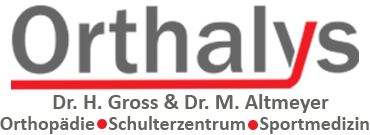This year, my visit to the 34th AGA Congress once again provided me with some new insights and tips that will influence my daily work.
New treatment algorithms were presented, particularly for the treatment of shoulder instability. In addition to injury to the cartilaginous labrum and ligaments, bone damage is particularly important. Problematic in this regard are disruption of the glenoid cavity and the Hill-Sachs lesion.
A Hill-Sachs lesion is a collapse of the humeral head that frequently occurs after shoulder dislocations.
A Hill-Sachs lesion can lead to recurrent dislocations during various movements. The situation becomes particularly critical when there is a deformity of the glenoid cavity. This promotes instability and can massively increase the risk of dislocation.
To better assess the risk and select the appropriate treatment for each individual patient, various criteria are assessed. An important aspect here are the so-called on-track and off-track lesions. These can be determined based on the location and size of the Hill-Sachs lesion and the shape of the acetabulum.








